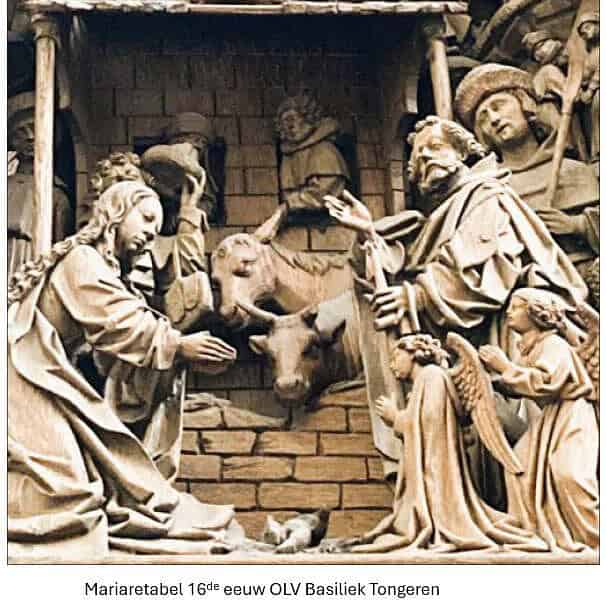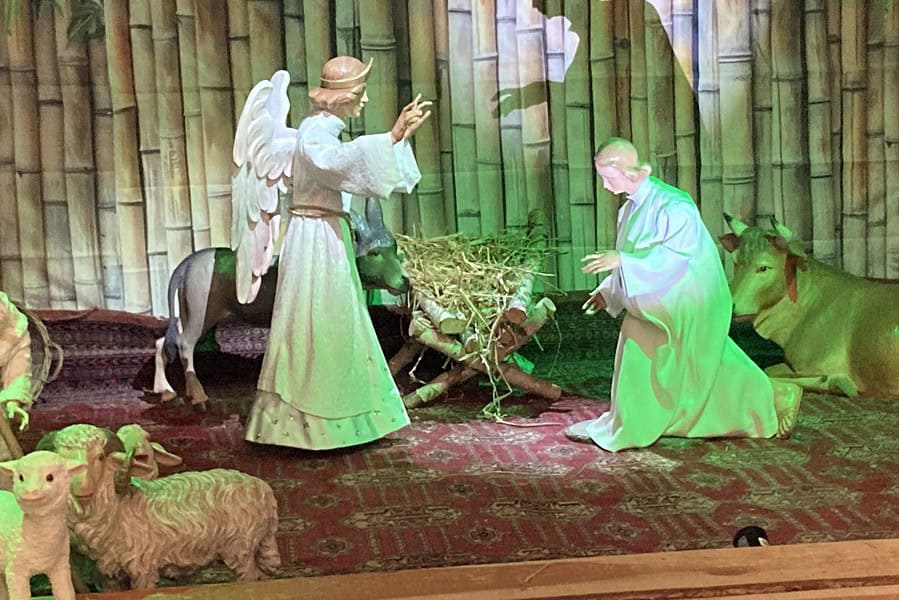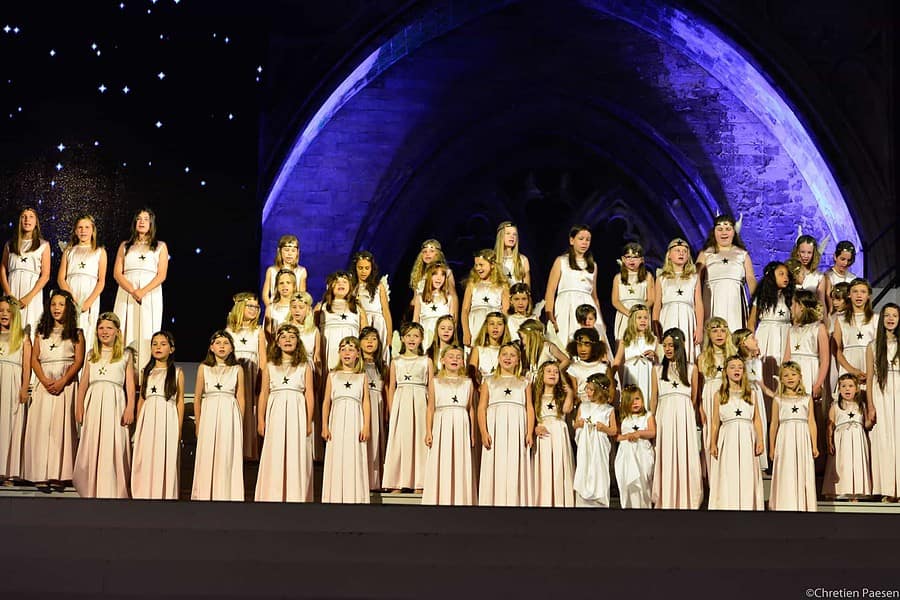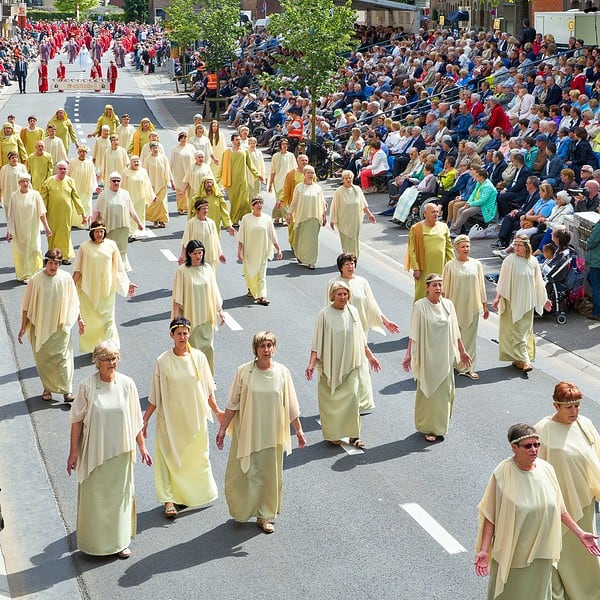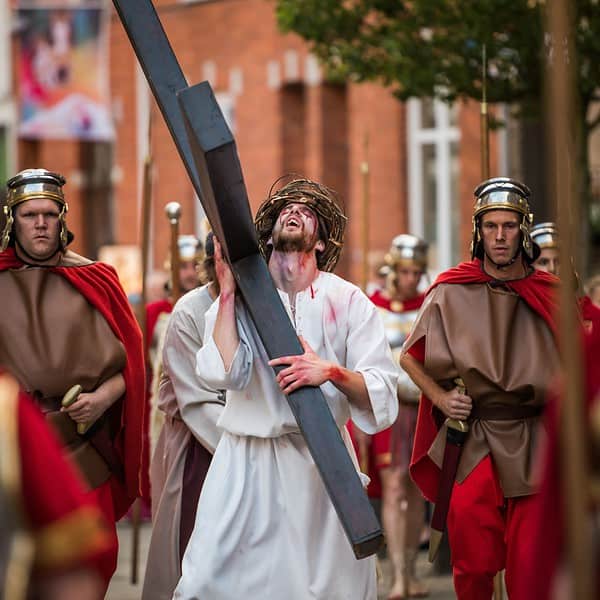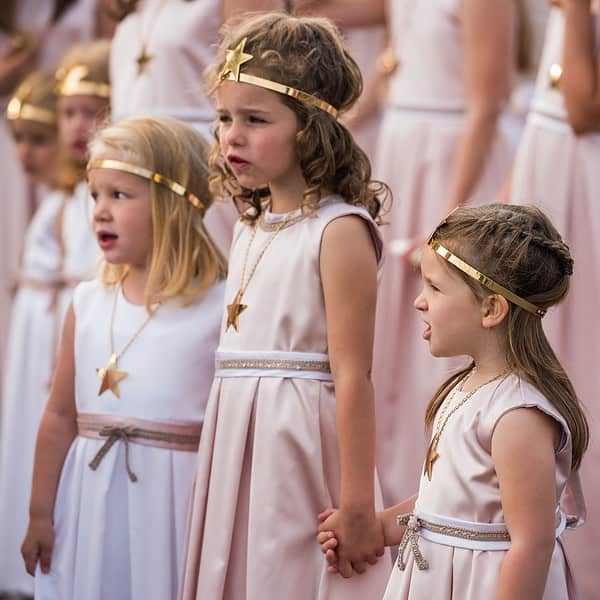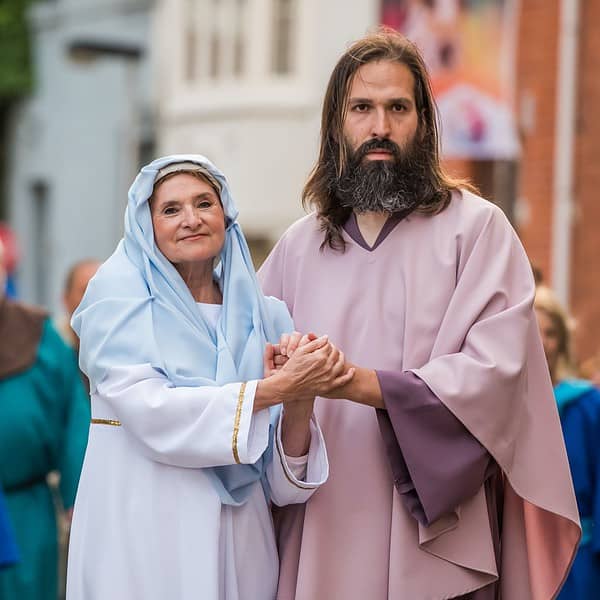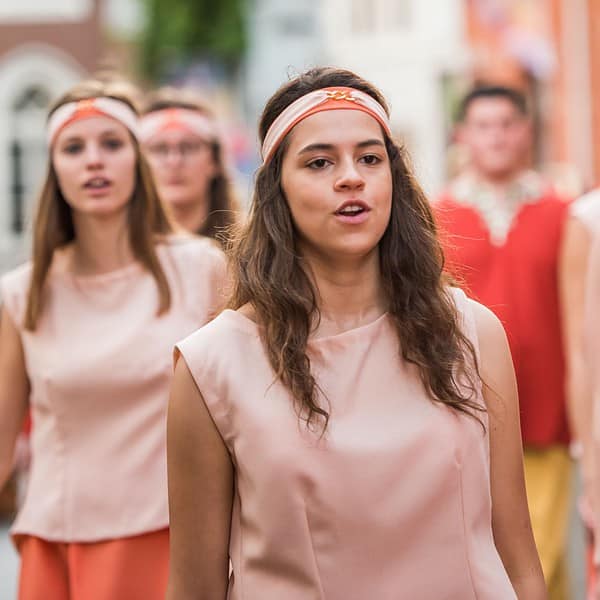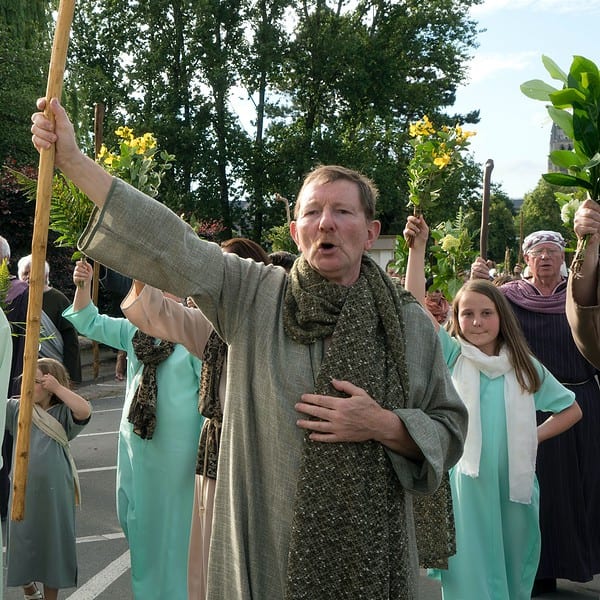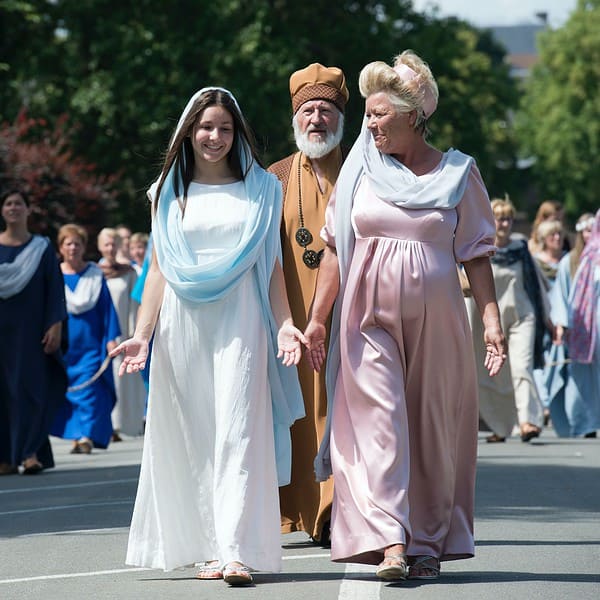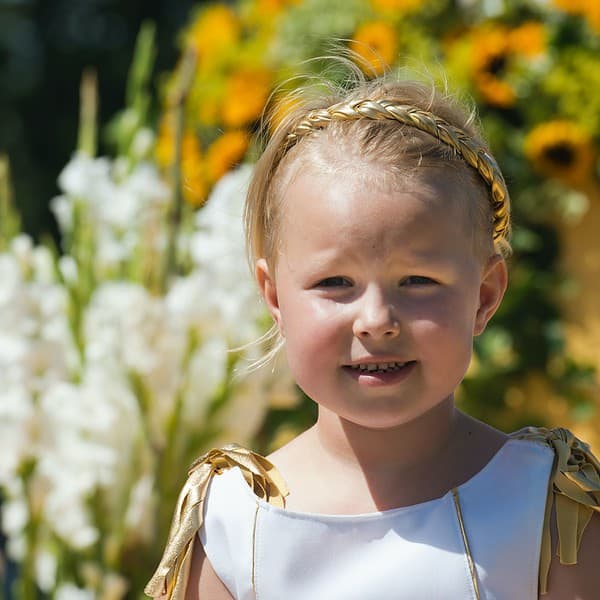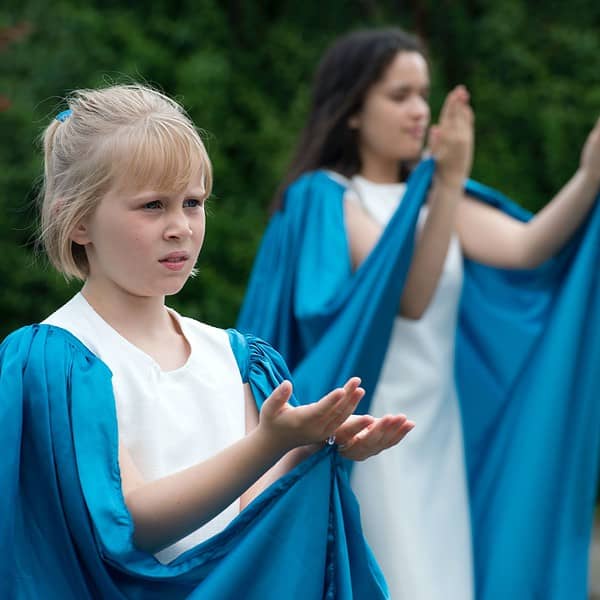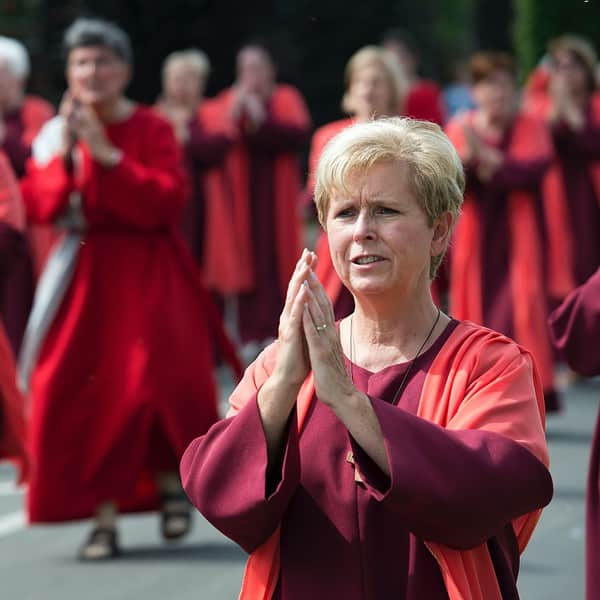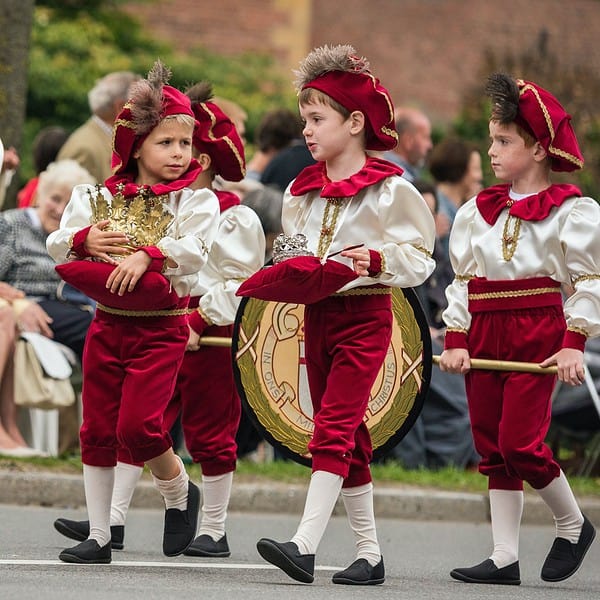
ORIGIN OF THE CORONATION CELEBRATIONS
ORIGIN
Starting in the 14th century, relics were shown in Tongeren every seven years for 16 days to pilgrims coming on pilgrimage. It was probably Rodolf van den Beek who organized the seven-yearly toning of the relics for the first time in 1390. This was done from the middle gallery of the Basilica tower. In 1608, the date of the canonization was changed. The tonings lasted a fortnight and concluded with a solemn procession during which the relics were carried around the church. The last canonization took place in 1790. The French occupiers did not allow relic toning after that.
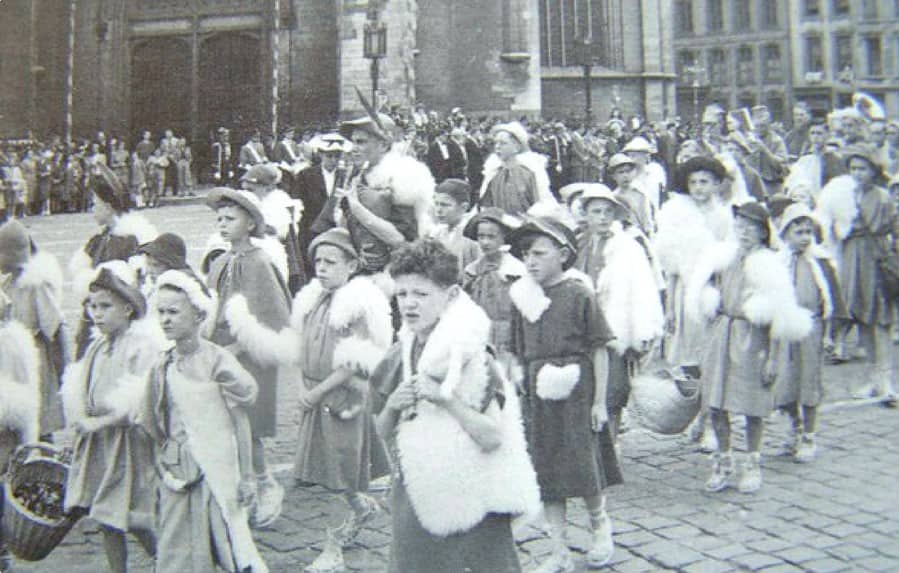
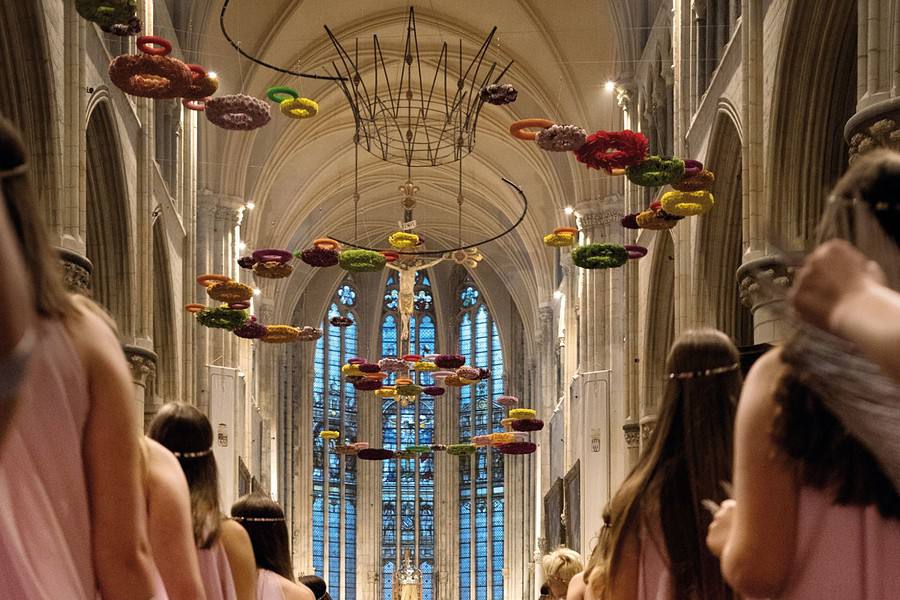
CORONATION
In the late 19th century, the Roman Catholic Church had a special veneration for Mary. This veneration was shown, among other things, in the crowning of statues of Mary. On May 20, 1889, the Bishop of Liège addressed a written request to Pope Leo XIII to crown the statue of grace in Tongeren. By breve of Sept. 10, 1889, the Pope acceded to the request. The coronation took place on Sunday, August 31, 1890. After the ceremony, a procession passed through the decorated streets and squares of the city. Thus were born the Coronation Celebrations. The people of Tongen found in this an opportunity to reconnect with the former Sanctuary processions that took place every seven years. To this day, the Coronation Celebrations take place every seven years in Tongeren. Only in 1918 as a result of the First World Fire could this not happen. The Coronation Celebrations are recognized as intangible cultural heritage.


